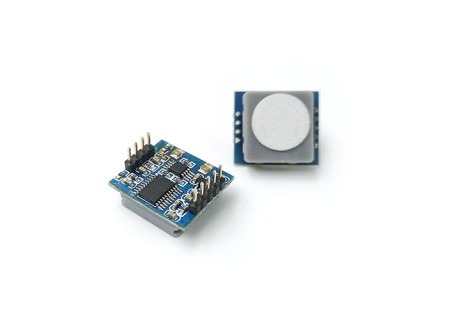Principle of electrochemical oxygen sensor

An electrochemical oxygen sensor is a sensor that uses electrochemical reactions to detect oxygen content in the air. Its working principle is based on the basic structure of an electrochemical sensor. It has high sensitivity and specificity and can sensitively detect oxygen produced during breathing. Concentration changes, so it is widely used in the monitoring and treatment of respiratory diseases. This article will introduce the principle and working mechanism of electrochemical oxygen sensors.
Principle of electrochemical oxygen sensor
Electrochemical oxygen sensors usually consist of electrode materials and electrolytes. Among them, electrode materials include platinum, palladium, nickel, chromium, etc. These electrode materials serve as electrodes in electrochemical reactions to reduce oxygen ions into oxygen molecules. The electrolyte is usually a solution containing oxygen, hydroxyl ions, and hydrogen ions. Oxygen and hydroxide ions generate water molecules and oxygen molecules during the reduction and oxidation processes of the electrode, while hydrogen ions are reduced to hydrogen gas molecules.
When oxygen in the air enters the sensor through the sensor's air inlet, it reacts with the electrode material and electrolyte to generate an electric current. According to the working principle of the electrochemical oxygen sensor, the oxygen sensor generates a reaction current, which can be used to detect changes in oxygen concentration produced during breathing. Specifically, when the oxygen concentration decreases during breathing, the electrode material will undergo a reduction reaction, producing more oxygen molecules, resulting in an increase in reaction current; conversely, when the oxygen concentration increases during breathing, the electrode material will undergo an oxidation reaction. , producing fewer oxygen molecules, resulting in a reduction in reaction current.
How electrochemical oxygen sensors work
The working mechanism of the electrochemical oxygen sensor mainly includes the following aspects:
1. Electrode materials for oxygen sensors
The electrode materials of oxygen sensors usually use precious metals such as platinum, palladium, nickel, and chromium. These electrode materials have excellent reduction and oxidation properties and can ensure the sensitivity and specificity of the sensor.
2. Selection of electrolyte
The electrolyte of electrochemical oxygen sensors usually uses a solution containing oxygen, hydroxyl ions and hydrogen ions. Oxygen and hydroxyl ions generate water molecules and oxygen molecules during the reduction and oxidation process of the electrode, while hydrogen ions are reduced. is a hydrogen molecule. Adding an appropriate amount of buffer to the electrolyte can balance the electrode reaction and the electrolysis reaction, thereby ensuring the stability and reliability of the sensor.
3. Sensor construction
The construction of an electrochemical oxygen sensor mainly includes steps such as preparation of electrode materials and electrolyte, fixation of electrode materials, and filling of electrolyte. These steps ensure the stability and reliability of the sensor and enable it to accurately detect changes in oxygen concentration produced during breathing.







-450x320.jpg)
-450x320.jpg)
-450x320.jpg)
-450x320.jpg)
